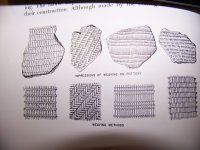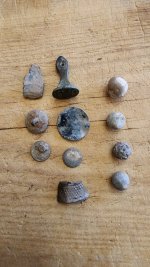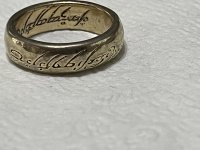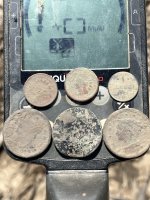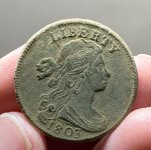Upvote
7
You are using an out of date browser. It may not display this or other websites correctly.
You should upgrade or use an alternative browser.
You should upgrade or use an alternative browser.
Mission Period Pottery
- Thread starter JohnDee1
- Start date
traveller777
Gold Member
- Aug 20, 2017
- 5,435
- 17,432
- Detector(s) used
- Minelab CTX 3030 & Explorer
- Primary Interest:
- All Treasure Hunting
Nice post. Thanks.
newnan man
Gold Member
Nice, you really know your pottery. I used to collect it a little but stopped. I found some pretty neat looking pieces but mostly just junk. Thanks for the info.
Older The Better
Silver Member
- Apr 24, 2017
- 3,135
- 5,814
- Detector(s) used
- Whites Eagle Spectrum
- Primary Interest:
- All Treasure Hunting
Like the insight, I have exactly 1 spot I’ve found pottery around here, it’s pretty exciting when a piece comes up. Keep sharing.
Tdog
Silver Member
YES he does!Nice, you really know your pottery..
- Jan 27, 2009
- 18,712
- 11,688
- 🥇 Banner finds
- 1
- Detector(s) used
-
Tesoro Conquistador freq shift
Fisher F75
Garrett AT-Pro
Garet carrot
Neodymium magnets
5' Probe
- Primary Interest:
- All Treasure Hunting
joshuaream
Silver Member
Great post, I learned quite a bit!
Top Member Reactions
-
 2591
2591 -
 1143
1143 -
 1031
1031 -
 903
903 -
 870
870 -
 838
838 -
 792
792 -
 666
666 -
 664
664 -
 630
630 -
 473
473 -
 472
472 -
 467
467 -
 462
462 -
 459
459 -
 440
440 -
 416
416 -
 414
414 -
O
392
-
 380
380
Users who are viewing this thread
Total: 2 (members: 0, guests: 2)
Latest Discussions
-
-
🥇 BANNER First for me wax seal stamp! Updated with wax impression
- Latest: Oldrvrrat57
-
-



